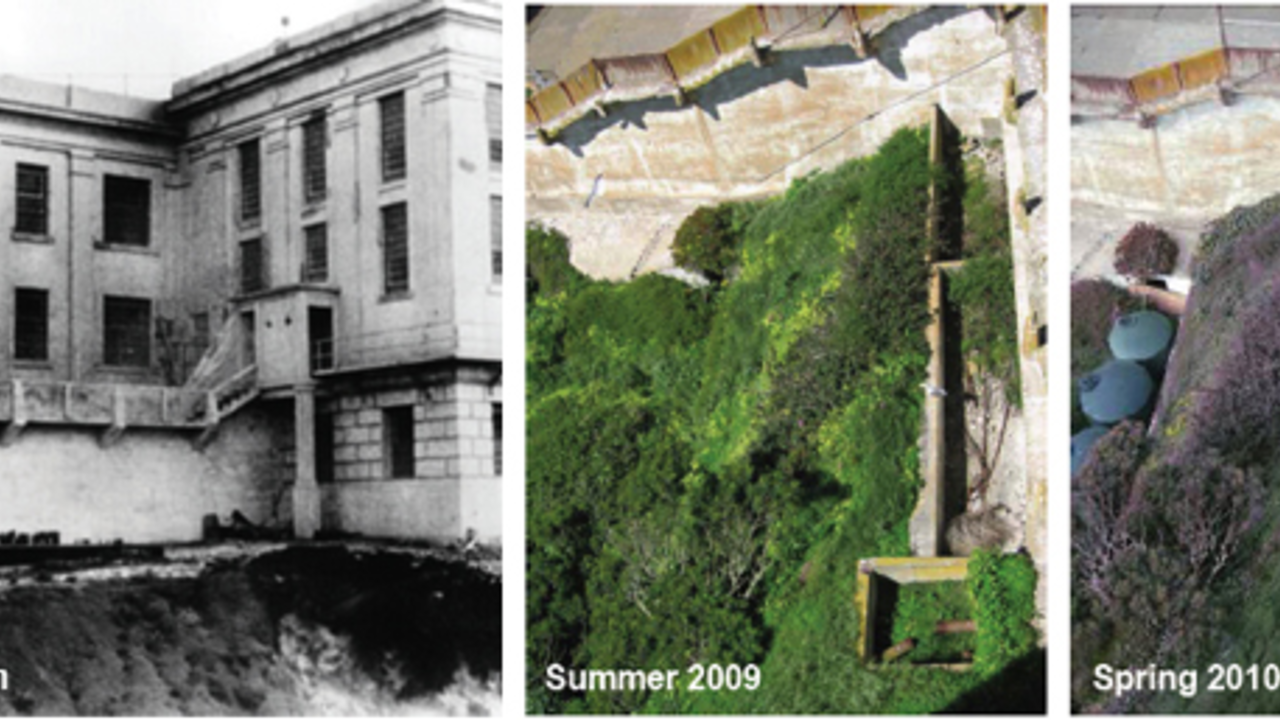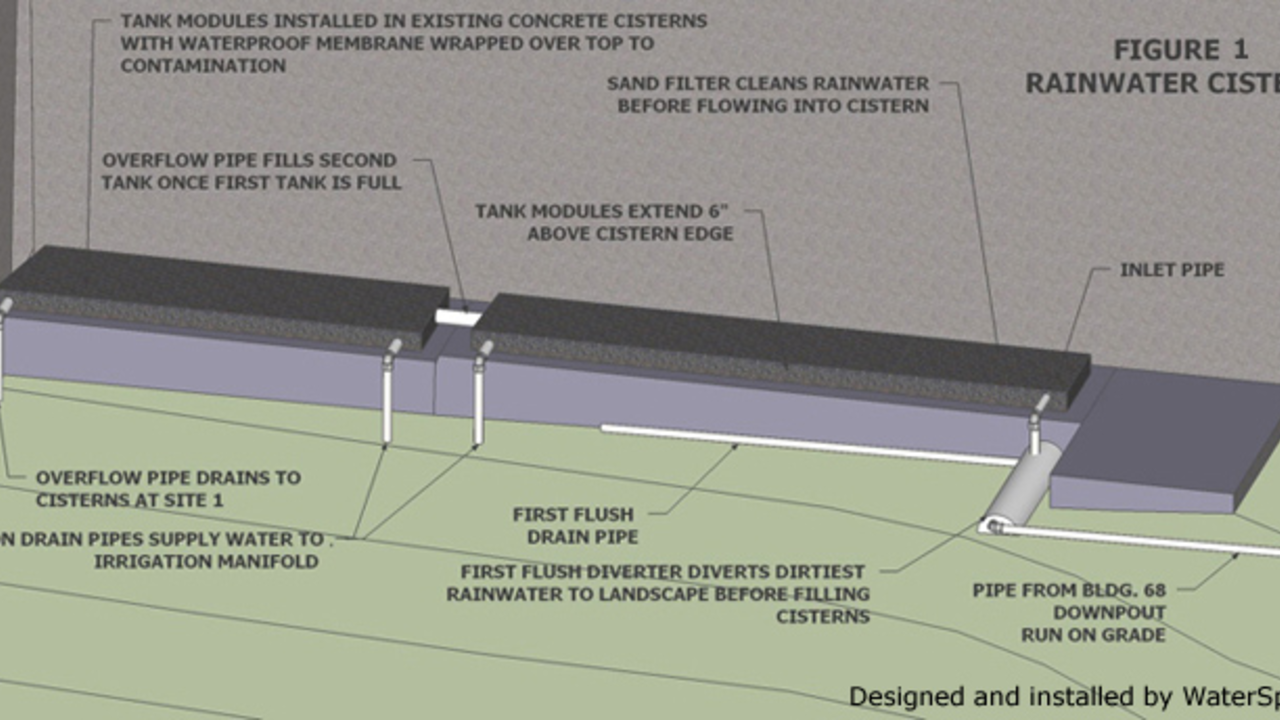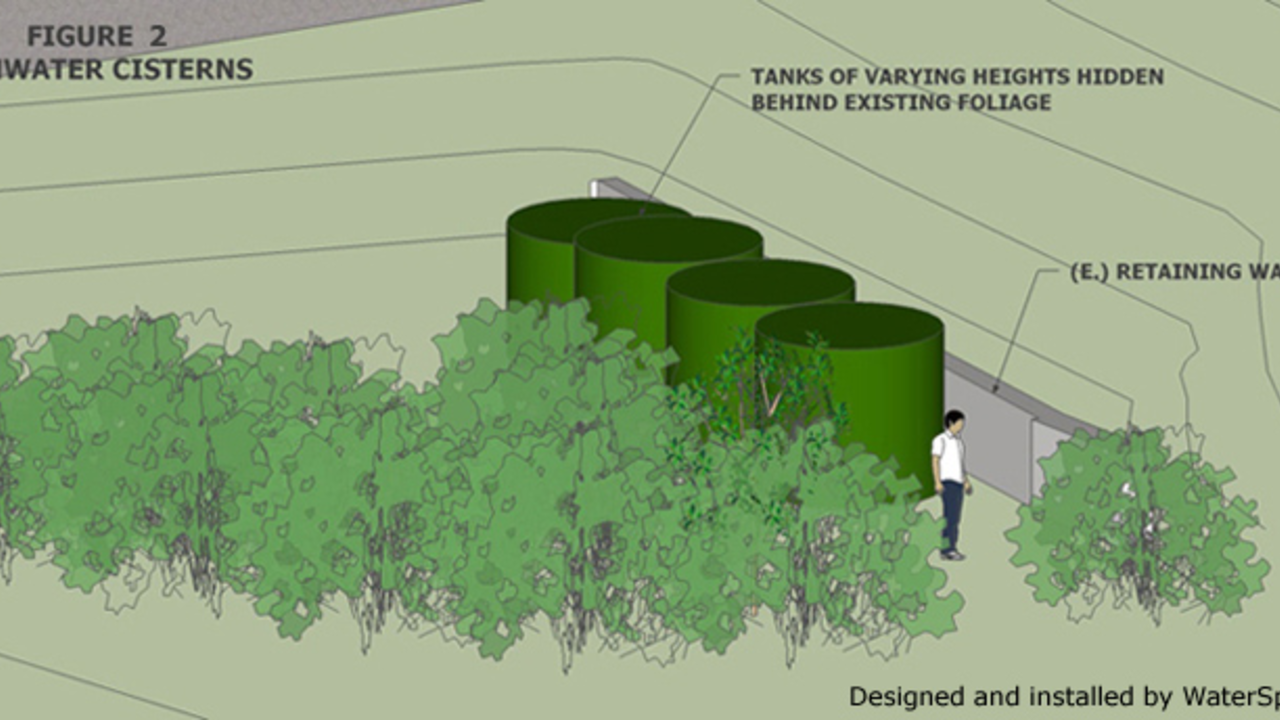Sustainable Gardening at Alcatraz Historic Gardens
Rainwater Catchment System

Other than fog drip and winter rains, Alcatraz Island is without a source of fresh water. Historically, both the military and the federal prison had built cisterns to capture rainwater, but these fell into disrepair after the prison closed. Because the National Park Service is dependent on water brought by barge to the island, the Gardens of Alcatraz project team installed a rainwater catchment system in 2009. By using the historic concrete cisterns that recycled water from the former federal prison showers, the system can capture 12,000 gallons of rainwater, meeting the garden's annual water needs.
WaterSprout Landscape Design and Construction created the gravity-based water-catchment system. Water from the cellhouse roof drains to the downspout and is directed to the historic cisterns. The water passes through a large filter that catches feathers and larger debris, and a first-flush diverter prevents the water with smaller particles from being collected. Next, the water is sent through a sand filter where beneficial bacteria neutralize any harmful bacteria. After filtering, the rainwater flows to four new storage tanks.


Composting on Alcatraz
When the Gardens of Alcatraz restoration project began in 2003, staff and volunteers began removing 40 years of overgrowth without a designated place on the island to compost. The removed overgrowth was hauled to the Parade Ground and added to the ruins of the former apartment buildings, already buried in vegetation. But the Parade Ground closes each bird-nesting season from February to September, so every winter there was a race to clear and deposit the vegetation; during the summer months vegetation removal still continued but a massive pile accumulated quickly, waiting to be hauled away in September.
In 2007, the project team began restoring the Rose Terrace. Situated halfway up the east side of the island, this garden area was historically the center of gardening operations and had featured a large greenhouse. Logically, the garden rehabilitation plans recommended this area once again be used as a center of garden operations and include a composting site. Using three 4'x4'x4' compost bins, constructed with the help of Job Corps of Treasure Island, we now produce award-winning compost. With use of a chipper, woody vegetation (ivy, blackberries, roses, and other shrub clippings) removed from the gardens is shredded. This material provides the "browns" that are high in carbon. The "greens" come from spent flower heads and plant cuttings, weeds that have not gone to seed, and ivy leaves that provide nitrogen.
Layers of greens, browns, purchased chicken manure are layered in the bins. Each batch takes roughly 4-6 weeks to mature. The temperature easily reaches between 140 and 160 Fahrenheit. High temperatures are needed to break down the organic matter. The bins are turned weekly for aeration and are lightly watered for moisture to aid in decomposition. After the temperature cools, red wiggler worms do their magic and work their way up from the bottom of the bins. Ideally, the worms stay for another month to break down the organic matter further, and in turn, add to the organic matter themselves with worm castings.
Once the batch is "done," larger fibrous pieces that have not broken down are sifted out to be used as mulch or to be put back in the next batch to be composted. The finished compost is used for potting mix and topdressing all the gardens. We compost over 99% of the biowaste coming from the maintenance of the gardens.